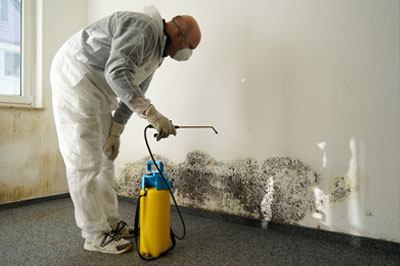
Do you have mold in your home? Yes! Spores are everywhere. The real question is there enough to cause health issues or damage. Don’t be too concerned about what types of mold you might have — just get rid of any you might find.
Exactly What Is It?
Mold is a type of fungus, not a plant, so it doesn’t need light to grow. It gets all the food it needs from dissolved nutrients. It’s pretty much everywhere, and actually that’s a good thing. Mold is an important part of almost every ecosystem, recycling dead plant material into a fertilizer more easily used by other plants.
Mold spores function as seeds, but are a single cell. They’re so tiny that most are invisible and all can float great distances on the slightest air current. When released from a mushroom (another type of fungus) they can look like smoke wafting away.
How Did It Become a Problem?
Mold spores are almost always present indoors, having made their way inside thorough doors, windows, and vents. They can also be tracked in on shoes and clothing as well as by pets. But you don’t have any mold growth until there’s some lingering source of moisture. That could be a leak, a spill, flooding from a winter storm, or just high humidity in a bathroom.
Mold in the home thrives on wood, paper, and cardboard products as well as acoustic ceiling tiles. It can also grow on paint, wallpaper, drywall, carpet, and fabrics. It actually prefers darkness so you won’t necessarily see it. You may only notice a musty odor or various health symptoms.
What Are the Real Health Risks?
Different people have different degrees and types of reactions to mold exposure. Children and the elderly are particularly at risk, and some individuals have a serious mold allergy. There’s some controversy over what is and isn’t attributable to exposure to mold, but there is a consensus concerning many health risks based on specific research.
The Center for Disease Control notes that exposure can indeed make you sick. Almost anyone can develop an allergy to some degree and experience upper respiratory symptoms. Mold allergy symptoms and other health effects caused by mold can include
- coughing, wheezing, and/or shortness of breath,
- eye, nose, and throat irritations, and
- a stuffy nose.
Those with chronic lung disease, a compromised immune system, or who are particularly sensitive to mold may develop serious lung infections. There’s some evidence that exposure may increase the asthma incidence and symptoms in children. (Compiled from https://www.cdc.gov/mold/dampness_facts.htm). WebMD adds persistent sneezing, a runny nose, red or watery eyes, and skin rashes to the list (https://www.webmd.com/women/mold-mildew). Others claim that toxic species can cause headaches, impair brain function, and damage organs.
Each individual reacts differently and the above ailments can have many other causes, but if any of these symptoms are less severe when not at home then mold is a likely culprit.
What Should I Do About It?
If you have any health concerns the top priority is a check-up by your doctor. But then what?
When there’s visible signs of mold or that distinctive musty smell, you clearly have a problem. Perhaps the worst of it is hidden under flooring, behind cabinets, inside walls, and above the ceiling. And it’s time to clean up the mold in your home. There’s really no need to know the type. Assume the worst and treat it all as highly hazardous.
The EPA (Environmental Protection Agency) outlines their guidelines at https://www.epa.gov/mold/mold-remediation-schools-and-commercial-buildings-guide. It’s applicable to homeowners as well. The key thing to note is that except for relatively small affected areas (less than 10 square feet — that’s about 3 feet across) they strongly recommend hiring a professional mold removal company. Such professionals are also experts at tracking down any hidden problems.
TIP: The best way to prevent a mold outbreak is to keep everything dry. That includes staying on top of leaks and promptly taking care of spills and overflows. Indoor humidity needs to be kept below 50%, and that means a properly functioning ventilation system in bathrooms, kitchens, and laundry rooms.
